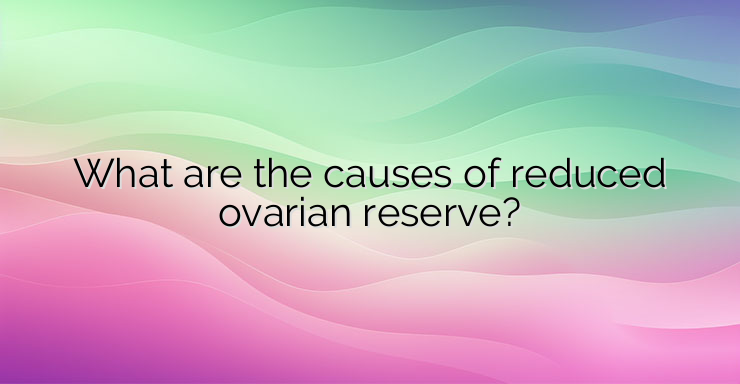Reduced ovarian reserve is due to decreased egg production from the ovaries or release of eggs that are not functionally suitable for fertilization. This leads to a deterioration in reproductive health and reduces the chances of getting pregnant. At the time of birth, the ovaries contain 6 million eggs. By the time puberty is reached, this number drops to a few hundred. Studies have shown that the chances of getting pregnant begin to gradually decrease after reaching the age of 25. Between the ages of 25 and 40, there is a significant deterioration in reproductive capabilities. This is due to the decline in egg quality and quantity that occurs with age. Some other factors also lead to reduced ovarian reserve: Ovarian surgery; Endometriosis; Smoking; Genetic abnormalities; Administration of certain therapeutic agents, for example radiation therapy for cancer; Sometimes the reduced ovarian reserve is idiopathic and the specific causes cannot be determined. Ovarian reserve determines the quantity and quality of available primordial follicles. Deteriorated quality and less quantity of available oocytes is a leading cause of infertility. The prevalence of this condition worldwide is increasing, but the application of assisted reproduction as a treatment method for reproductive disorders does not allow to focus on the causes and significance of these disorders. Usually, the establishment of the reduced ovarian reserve takes place among women at the age of 30, but it can also occur at an earlier stage. Diagnosing this condition is important because these patients have a reduced chance of becoming pregnant and an increased risk of pregnancy complications and miscarriage. Shorter menstrual cycles, which are due to early ovulation and follicular development, are a hallmark of reduced ovarian reserve. Another characteristic sign is the high basal levels of the follicle-stimulating hormone – FSH. In some cases, serum concentrations of this hormone may increase in a more advanced stage of ovarian reserve decline. The aging processes of the reproductive system begin even before birth and continue after menopause. The number of germ cells in the ovaries gradually decreases. This also explains the gradual deterioration of reproductive capabilities as time progresses. References: https://www.webmd.com/infertility-and-reproduction/what-is-diminishing-ovarian-reserve


Leave a Reply